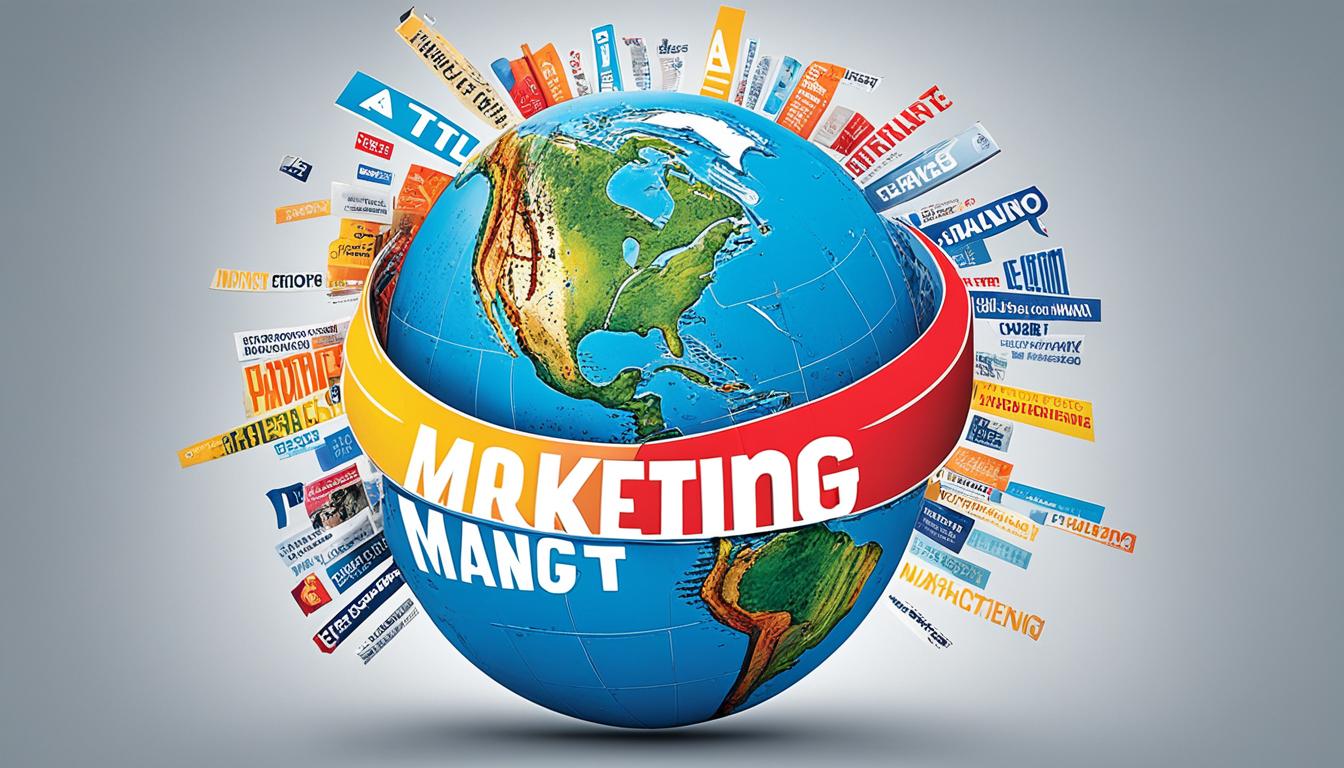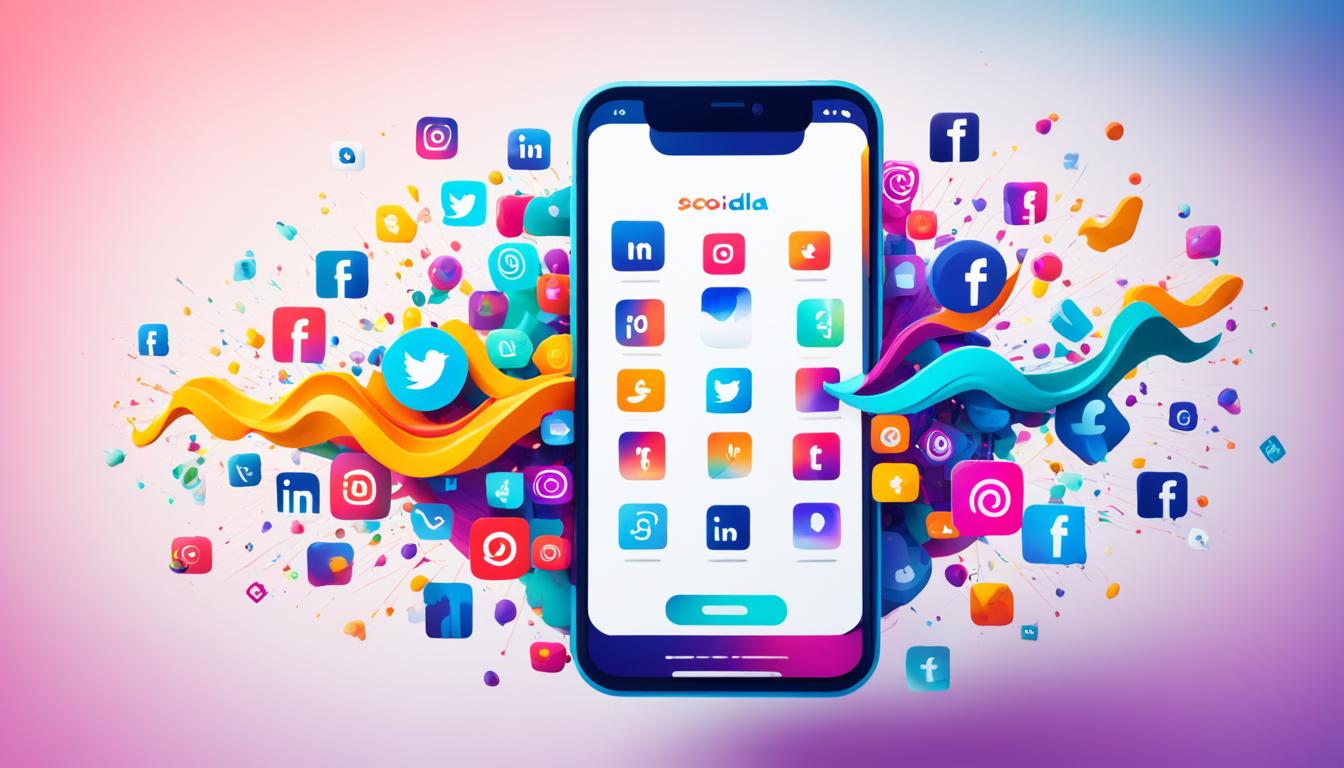Packaging in marketing refers to the process of designing and creating the material that surrounds a product. It includes selecting the right materials, designing the packaging, printing, and assembling it. Product packaging plays a crucial role in marketing as it is the first thing customers see when they encounter a product. It can attract attention, protect the product, convey information, and create a positive perception of the brand. Good packaging can enhance product appeal, differentiate it from competitors, and contribute to the overall success of a marketing campaign.
Key Takeaways:
- Packaging in marketing involves designing and creating the material that surrounds a product.
- It plays a crucial role in attracting attention, protecting the product, and conveying information.
- Good packaging enhances product appeal and contributes to marketing success.
- It can differentiate a product from competitors and create a positive perception of the brand.
- Choosing the right packaging materials, design, and strategy are essential for marketing effectiveness.
The Importance of Packaging in Marketing
Packaging plays a significant role in marketing for several reasons. Firstly, it is the first impression customers have of a product and can influence their purchasing decision. Eye-catching and appealing packaging can attract attention and make a product stand out on store shelves or online.
Secondly, packaging protects the product from damage, tampering, and contamination. It ensures that the product reaches the customer in good condition.
Thirdly, packaging provides essential information about the product, such as its name, features, and usage instructions. This information helps customers make informed buying decisions.
Lastly, packaging contributes to the branding of a product, as it can convey the brand’s identity, values, and message. It creates brand recognition and helps build a positive association with the product.
Effective packaging design is crucial in marketing as it can make a lasting impact on consumers and differentiate a product from competitors. When done right, packaging can create a positive customer experience, enhance brand visibility, and contribute to overall business success.
Packaging Strategy and Design
Developing a packaging strategy is crucial for marketing success. It involves determining the type of packaging that best suits the product, selecting appropriate materials, and designing the packaging to align with the brand’s identity and target audience. Packaging design should be visually appealing, reflecting the brand’s personality and values. It should also be functional, ensuring ease of use and protecting the product. The choice of materials is important to convey the desired quality and to align with sustainability goals. Overall, a well-planned packaging strategy and design can enhance the product’s marketability and create a positive customer experience.
Key Components of Packaging Strategy and Design
When developing a packaging strategy and design, there are several key components to consider:
- Packaging Materials: Selecting the right materials is crucial for packaging success. The materials chosen should align with the brand’s image and sustainability goals. For example, if a brand emphasizes eco-friendliness, using recyclable or biodegradable materials can reinforce the brand’s commitment to sustainability.
- Brand Packaging: The packaging design should reflect the brand’s identity and values. It should align with the brand’s visual elements, such as logos, colors, and typography. Consistency in brand packaging helps establish brand recognition and reinforces brand positioning in the market.
- Product Differentiation: Packaging design should help differentiate the product from competitors. Unique and eye-catching design elements can make the product stand out on store shelves and attract customers’ attention. It’s important to consider how the packaging design can communicate the product’s unique selling points and benefits to the target audience.
- User-Friendly Design: A packaging design should prioritize functionality and ease of use. Customers should be able to open the package easily and access the product without any hassle. Intuitive packaging design enhances the overall customer experience and reduces frustration.
By considering these components in packaging strategy and design, brands can create packaging that not only attracts customers but also aligns with their values and enhances the overall customer experience. It’s important to remember that packaging is not just a container for the product but an integral part of the marketing strategy.
| Packaging Strategy and Design | Benefits |
|---|---|
| Enhances Product Appeal | Eye-catching packaging design can attract customers’ attention and make the product stand out. |
| Differentiates from Competitors | Unique packaging design helps the product differentiate itself from competitors’ offerings. |
| Reflects Brand Identity | Packaging design aligns with the brand’s visual elements and reinforces brand recognition. |
| Provides Product Protection | Well-designed packaging ensures the product reaches customers in good condition and protects it from damage. |
| Conveys Information | Packaging provides essential product information that helps customers make informed buying decisions. |
| Supports Sustainability Goals | Choosing sustainable packaging materials demonstrates the brand’s commitment to the environment. |
Packaging Materials and Types
When it comes to packaging, there is a wide range of materials available, each with its own unique properties and characteristics. The choice of packaging materials depends on several factors, including the specific requirements of the product, sustainability goals, and cost considerations.
Here are some common packaging materials used in the industry:
- Glass: Glass packaging is often associated with high-end products due to its premium look and feel. It is durable, inert, and provides excellent product visibility. Glass is commonly used for preserving beverages, cosmetics, and specialty food items.
- Steel: Steel packaging offers exceptional strength and durability. It is commonly used for products that require high levels of protection, such as canned goods and aerosol containers.
- Aluminum: Aluminum packaging is lightweight, corrosion-resistant, and widely recyclable. It is commonly used for beverage cans, food containers, and pharmaceutical packaging.
- Paper and Paperboard: Paper and paperboard packaging is versatile, cost-effective, and environmentally friendly. It is commonly used for items such as cardboard boxes, cartons, and labels.
- Plastic: Plastic packaging is flexible, lightweight, and offers a wide range of design options. It is commonly used for a variety of products, including bottles, bags, and containers.
- Wood: Wood packaging provides a natural and rustic appeal. It is commonly used for products such as wine crates, wooden boxes, and specialty gift packaging.
- Others: There are also various other materials used for packaging, including biodegradable and compostable materials, rubber, textiles, and more.
It’s important to note that packaging can be categorized into three levels: primary, secondary, and tertiary packaging.
- Primary Packaging: This is the direct container that holds the product. It is the packaging that comes in direct contact with the product, such as a bottle, box, or pouch.
- Secondary Packaging: Secondary packaging provides additional protection and facilitates storage and transportation. Examples include cardboard boxes, shrink wrap, and blister packs.
- Tertiary Packaging: Tertiary packaging is used for bulk shipping and distribution. It includes pallets, stretch wrap, and shipping containers.
By understanding the different packaging materials and types available, businesses can make informed decisions that align with their product requirements, sustainability goals, and branding objectives.
The Role of Product Packaging in Customer Experience
Product packaging plays a crucial role in shaping the customer experience. When customers encounter a product for the first time, the packaging is their initial touchpoint, and it has the power to create a lasting impression. The design, materials, and branding elements of the packaging all contribute to how the product is perceived by customers.
High-quality packaging can enhance the perceived value of the product and create a sense of excitement and anticipation during the unboxing process. When customers receive an item that is thoughtfully packaged with attention to detail, it can significantly impact their overall satisfaction with the purchase.
Furthermore, product packaging plays an essential role in generating repeat purchases and customer loyalty. When customers have a positive experience with a product’s packaging, they are more likely to develop a connection with the brand and feel confident in their decision to support it. This sense of loyalty can lead to long-term customer relationships and advocacy.
Businesses should prioritize creating packaging that delivers a positive and memorable customer experience. By considering factors such as packaging design, materials, and branding, companies can ensure that their packaging aligns with their target audience’s preferences and expectations. Investing in high-quality packaging that reflects the brand’s values and resonates with customers can have a significant impact on overall customer satisfaction and brand perception.
| Benefits of Product Packaging in Customer Experience |
|---|
| Enhances perceived value of the product |
| Creates a sense of excitement and anticipation |
| Contributes to repeat purchases and customer loyalty |
| Reflects and reinforces the brand’s identity |
| Makes the unboxing experience memorable |
| Builds a positive perception of the brand |
Considerations for Packaging Budgeting and Shipping
When it comes to packaging, budgeting is a critical aspect that businesses need to consider. It involves taking into account various factors such as the cost of packaging materials, printing, assembly, and shipping. These costs can significantly impact the overall budget and profitability of a product.
One of the key considerations in packaging budgeting is the choice of packaging materials. Different materials have different costs associated with them. For example, packaging made from high-quality materials may be more expensive but can enhance the perceived value of the product. On the other hand, using cost-effective materials may help reduce expenses without compromising the product’s quality.
Another important factor to consider is packaging design. Intricate and complex designs can increase the printing and assembly costs. Simpler designs, however, may have lower production costs but still convey the desired branding and product information effectively.
Shipping costs are another crucial aspect to take into account when budgeting for packaging. The size, weight, and distance of product transportation can impact shipping expenses. Additionally, businesses should also be aware of any taxes, regulations, or import/export requirements that may affect the shipping costs.
Overall, a detailed analysis of packaging materials, design, and shipping costs is necessary to create a realistic budget that aligns with the desired packaging quality, branding objectives, and profitability. Here’s an example of how such a budget analysis table can look:
| Packaging Cost Considerations | Cost Impact | Considerations |
|---|---|---|
| Packaging Materials | High | Choosing high-quality materials can enhance product appeal but may increase costs. |
| Printing and Assembly | Medium | Intricate designs and complex assembly processes may add to the production expenses. |
| Shipping | High | The size, weight, and distance of product transportation can significantly impact shipping costs. |
| Taxes, Regulations, and Import/Export | Medium | Understanding and complying with relevant regulations and requirements may involve additional costs. |
By carefully considering these factors, businesses can create an effective packaging budget that optimizes packaging quality, branding goals, and profitability.
Collecting Customer Feedback for Packaging Improvement
Customer feedback is crucial for enhancing packaging strategy and design. By actively seeking and analyzing customer opinions, businesses can gain valuable insights into the strengths and weaknesses of their packaging. This feedback can then be used to make the necessary improvements and optimize packaging for an enhanced customer experience.
There are several methods businesses can employ to collect customer feedback. One effective approach is through surveys, where customers are asked to provide their opinions on various aspects of the packaging, including design, functionality, and brand representation. Feedback forms and polls can also provide valuable insights into customer preferences and perceptions.
When collecting customer feedback, it is important to ask open-ended questions that allow customers to express their opinions freely. This helps businesses uncover both positive feedback and areas for improvement. Additionally, businesses should consider using rating scales or Likert scale questions to quantify customer satisfaction.
Once the feedback has been collected, it is crucial to analyze the data and identify common patterns and trends. This analysis can help identify specific areas of improvement for packaging strategy and design. By understanding customer preferences and expectations, businesses can align their packaging with customer needs and drive customer loyalty.
Furthermore, customer feedback can also provide invaluable insights into how effectively the packaging conveys product information and brand identity. Businesses can assess whether the packaging aligns with the messaging and values of the brand. This ensures that the packaging not only protects the product but also serves as a powerful marketing tool.
By involving customers in the packaging design process, businesses demonstrate their commitment to providing an exceptional customer experience. Customer feedback allows businesses to tailor their packaging to customer preferences, making it more visually appealing, functional, and aligned with the brand’s overall strategy.
Key Steps to Collecting Customer Feedback for Packaging Improvement:
- Utilize surveys, feedback forms, and polls to gather customer opinions
- Ask open-ended questions to encourage detailed feedback
- Consider using rating scales or Likert scale questions to quantify satisfaction
- Analyze feedback data to identify areas of improvement
- Assess how effectively the packaging conveys product information and brand identity
- Involve customers in the packaging design process to enhance their experience
Collecting and utilizing customer feedback is an ongoing process. By continuously seeking input and making iterative improvements, businesses can ensure their packaging remains aligned with customer expectations and contributes to a positive brand image.
The Impact of Unique and Memorable Packaging
In a competitive market, packaging design can make all the difference. Unique and memorable packaging has the potential to capture customers’ attention, pique their curiosity, and set a product apart from its competitors. By incorporating eye-catching design elements such as vibrant colors, captivating graphics, and intriguing shapes, businesses can create packaging that is visually appealing and leaves a lasting impression.
One effective strategy for creating memorable packaging is to employ innovative techniques that engage customers on a deeper level. Interactive features, such as pull tabs, pop-ups, or augmented reality elements, can enhance the unboxing experience and create a sense of excitement. Personalized elements, such as customized labels or product messages, can make customers feel special and connected to the brand.
Investing in distinctive packaging offers numerous benefits for businesses. Firstly, it increases brand visibility as eye-catching packaging is more likely to grab the attention of potential customers. This can lead to higher brand recognition and recall, ultimately translating into increased sales. Secondly, unique packaging helps businesses attract new customers who are drawn to the visually appealing and intriguing design. Lastly, memorable packaging can foster brand loyalty as it creates a positive and memorable customer experience that encourages repeat purchases.
Examples of Memorable Packaging
| Brand | Product | Unique Packaging Element |
|---|---|---|
| Apple | iPhone | Elegant minimalist design with hidden compartments |
| Oreo | Oreo Cookies | Playful packaging with interactive puzzles and games |
| Tiffany & Co. | Jewelry | Signature blue box with white ribbon |
| Red Bull | Energy Drink | Sleek and slim can design with distinctive logo |
These examples demonstrate how unique packaging can help brands create a memorable and distinctive presence in the market. By adopting innovative design elements and thinking outside the box, businesses can create packaging that not only protects the product but also becomes an integral part of the overall brand experience.
Conclusion
Packaging plays a pivotal role in marketing by influencing customers’ purchasing decisions, protecting the product, conveying information, and enhancing brand image. It is essential to develop a comprehensive packaging strategy and design that aligns with the brand’s identity, target audience, and financial considerations. By prioritizing performance, perception, and price, businesses can create packaging that not only captures customers’ attention but also delivers a positive customer experience.
Collecting customer feedback and continuously improving the packaging design can further optimize product appeal and brand loyalty. By listening to customers, businesses can understand their preferences, identify areas for improvement, and make necessary adjustments to meet customer expectations. This feedback-driven approach ensures that packaging evolves to meet changing consumer needs and market trends.
In today’s competitive market, investing in unique and memorable packaging can be a key driver of marketing success. When customers encounter visually appealing and distinctive packaging, it creates a lasting impression and sets the product apart from competitors. By investing in packaging that reflects the brand’s identity and values, businesses can enhance brand recognition, attract new customers, and foster loyalty among existing ones.
Ultimately, packaging is not just a means to contain and protect a product. It is a powerful marketing tool that communicates the brand’s message, captivates the audience, and influences purchasing decisions. By prioritizing packaging strategy and design, businesses can create a memorable customer experience that leaves a positive impression and drives business growth.





